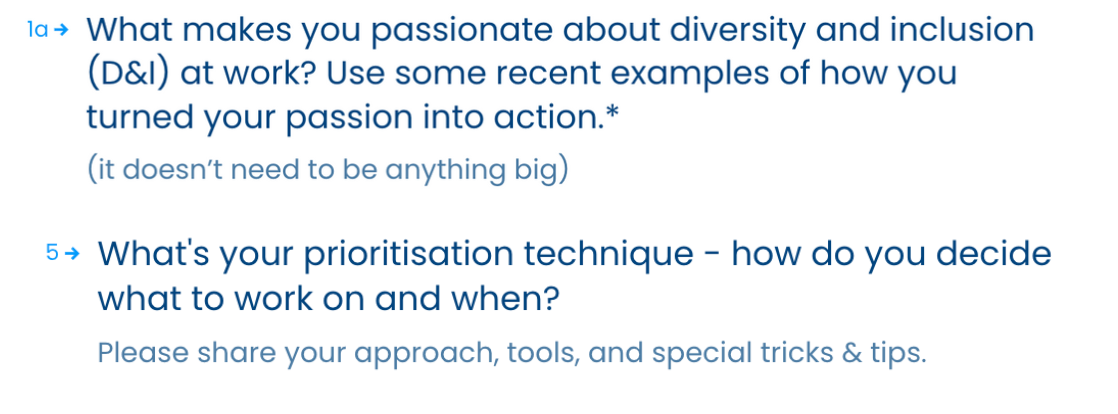It’s time to ditch CVs. Screen candidates based on skill instead.

Bias could be getting between you and the perfect candidate before you’ve even read their ‘about me’. Cut through the noise and ditch CVs. Screen candidates based on motivation and capabilities instead.
✅ Checklist of actions:
- Create a short application form for candidates to fill in instead of submitting their CV.
- Create short work sample tasks as part of the application form (if you’re hiring a high-volume role).
CVs (and LinkedIn profiles) present you with a tonne of noisy information that can cloud your judgement. We’re talking about things like name, gender, age, hobbies, favourite flavour of ice cream… These things often pop up on CVs (well, not all of them) and tell you nothing about a candidate’s potential in a role.
When facing a pile of 100s of CVs, it’s easy to feel overwhelmed. Our brain tries to make things easier for us by relying on mental shortcuts. A study using eye-tracking technology revealed that recruiters skim CVs for 7.4 seconds on average! There’s no way to digest all the information on a CV in under 8 seconds, so what information do we focus on?
🎓 Even with similar qualifications and experience, recruiters favour CVs with ‘white-sounding’ names. One famous study found that ‘Emily Walsh’ received 50% more callbacks than ‘Lakisha Washington’ despite having an identical CV.
How CVs set our biases ablaze
When evaluating resumes, we’ll be looking for easy signals that make a candidate stick out. And according to behavioural science, this isn’t always going to be relevant for judging how well a candidate fits a given role.
We all prefer people who seem to be like us (we call this ‘in-group bias’). If you have to make a choice in 7.4 seconds, subconsciously, you’ll be looking for information that appeals to you personally. This means that you could prefer a candidate not because they have relevant experience, but because they went to the same school as you or also play volleyball in their free time.
Or, your brain might rely on stereotypes to make judgements about who is or isn’t a good fit. For example, you might automatically prefer a woman for a Head of HR role and assume that a man would be better suited as Head of Engineering. We make these implicit associations automatically — you can test them out for yourself online.
A common solution to bypass this bias is removing all demographic information from (or ‘blinding’) CVs. This is one way to cut out bias, but at Fair HQ, we suggest going a step further…
Screen candidates with an application form instead of CVs.
When we hire a new role, we never ask for a candidate’s CV. Instead, we require applicants to fill in a brief survey outlining their skills, knowledge, and passion for D&I.
Filling in a survey might sound like a lot of extra work to ask candidates to go through, but it’s really no more effort than writing a cover letter. It also helps you filter out those who aren’t so motivated to apply, leaving you to review the most dedicated and enthusiastic candidates out there.
Here’s a snapshot of what we typically ask at Fair HQ:

Work-sample tasks
For high-volume roles, we ask a little more. When we hired our Business Intern, we received 900 applications 😵💫. We knew it would be a popular position, so we added an extra step to the process.
Candidates had to complete 3 short work sample tasks that gave them a realistic taste of the work they’d be doing on the job. Their answers gave us a great understanding of their potential in the role and showed candidates whether or not they’d enjoy the work.
We tested their information processing skills, their communication and their critical thinking. Here’s an example:

Worried about putting people off?
The application form can easily be adapted. If you’re hiring for a low-volume, senior or niche position, just keep things simple — ask candidates a couple of motivation-based questions relevant to the role. You’ll still avoid the pitfalls of CVs and make things easier for your hiring team.
Our Fair HQ recommendations:
- Ask candidates to fill in an application form instead of submitting their CV For high-volume roles, ask applicants to complete short work-sample tasks to test their skills relevant to the job description
- For low-volume roles, keep it simple – ask a few motivation-based questions
Once you’ve gathered your responses, it’s time to give applicants a fair assessment. Read our next post in the series to see how.
Backing it up
Bertrand, M & Mullainathan, S. (2004) ‘Are Emily and Greg more employable than Lakisha and Jamal? A field experiment on labor market discrimination’ National Bureau of Economic Research
Bohnet, I., (2016). ‘What Works: Gender equality by design’ Harvard University Press
O’Donnell, R. (2018) ‘Eye tracking study shows recruiters look at resumes for 7 seconds‘ HR Dive